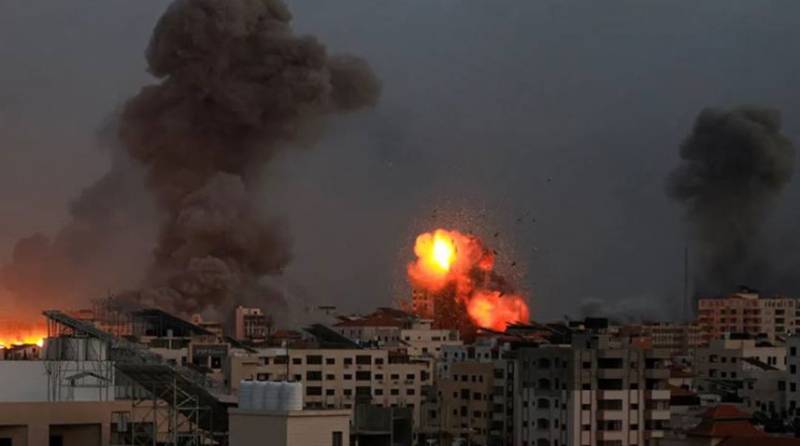Gaza (Web Desk/Agencies): The latest martyrdom toll in Gaza stands at 10,492 as scores of Palestinians have been killed in the last 24 hours in a new wave of Israeli air strikes that targeted Khan Younis in the south, Nuseirat in central Gaza and Jabalia in the north.
In Gaza at least 10,429 have been martyred including at least 4,237 children and 2,719 women, while at least 25,965 are injured that includes at least 8,067 children and 5,960 women according to Palestinian Health Ministry.
Meanwhile, in Occupied West Bank at least 164 were martyred and more than 2,100 injured.
The International Committee of the Red Cross (ICRC) says it’s “deeply troubled” that its humanitarian convoy of five trucks and two ICRC vehicles carrying lifesaving medical supplies to health facilities in Gaza City came under fire on Tuesday. Two trucks were damaged and a driver was lightly wounded in the Israeli attack, it said in a statement.
b3769e82875232b9774d5c5ecd54a88e
Intense bombardments continued for the 33rd day, many bombardments have been reported in the vicinity of al-Shifa Hospital and Indonesian Hospital, both in northern Gaza.
22817de4c2ce02201956a393a13c7c0c
Germany confirms more than 200 nationals and their family members have left the Gaza Strip.
Filipino President Bongbong Marcos has said there 40 “compatriots” have safely crossed the Rafah crossing via Egypt and are now on their way to Cairo. They would be returning to The Philippines soon, he added.
777b0b2b0945b5112f63fe318cbab572
Many people in Gaza are drinking polluted, salty water and queue for hours in the hope of obtaining potable water.
On October 9, the Israeli military announced a total blockade of the already besieged enclave, including a ban on water and food. Two days later, it cut off the power and restricted the entry of aid and fuel.
On November 4, Israel destroyed a water reservoir in northern Gaza as well as a public water tank that supplied several neighbourhoods in the south.
The World Health Organization (WHO) says that between 50 and 100 litres of water per person per day are needed – but it has put the average daily allocation in Gaza at a mere three litres for all daily needs, including drinking and hygiene.
f30ac7384c0fd9d87a2b0cc82a4febeb
The Food and Agriculture Organization of the United Nations (FAO) says that 80 percent of the population in the Gaza Strip was already food insecure prior to the start of the attacks on October 7. Nearly half the population of 2.3 million people relied on food assistance from the UN Relief and Works Agency for Palestine Refugees (UNRWA).
Before October 7, about 500 trucks on average were allowed into Gaza each day.
According to the UN’s Office for the Coordination of Humanitarian Affairs (OCHA), since October 21, at least 451 trucks have entered Gaza, of which 158 carried food. The remaining trucks carried mixed cargo. Fuel supplies are still not allowed to enter Gaza, which is seriously affecting the hospitals still functioning and risking the lives of thousands.


